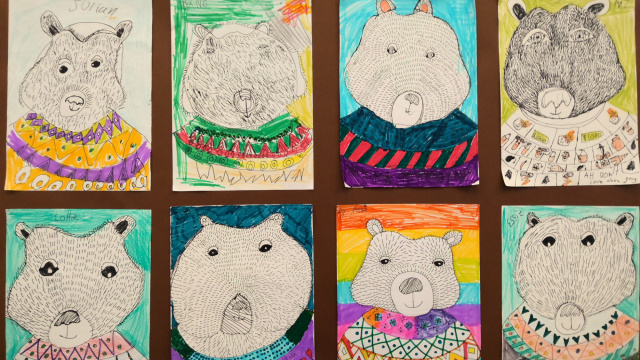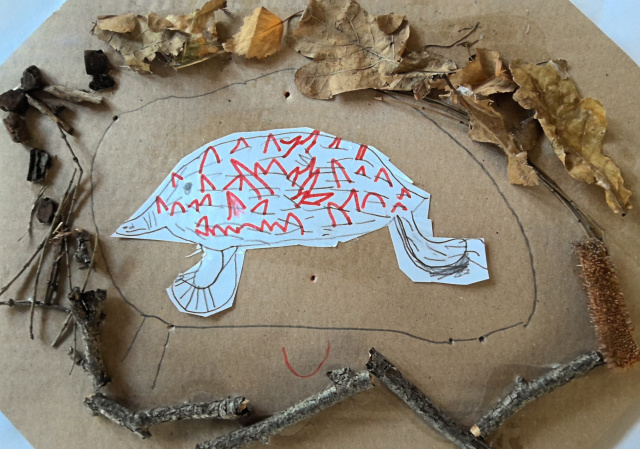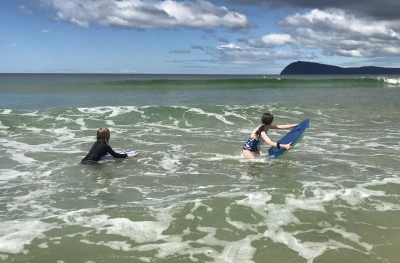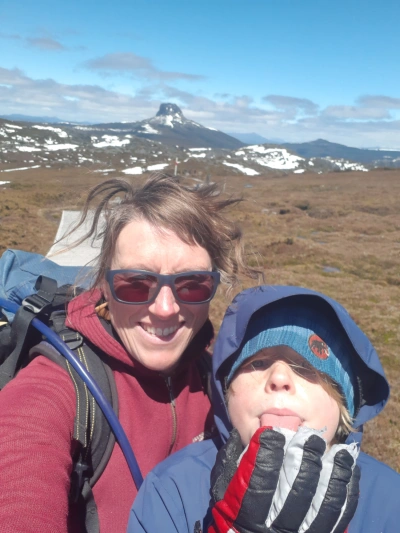Do wombats wear woolly jumpers in winter?
Bruny Island

No hot water bottles for your average antechinus, no beanies for Bennets wallabies, and certainly no woolly jumpers for the wombats. So how do all those fantastic critters keep warm when the temperature drops? Here are a few of the many marvellous ways that animals here in Tasmania and around the world keep warm in winter:
Growing a winter coat: Instead of putting on a woolly jumper some animals grow a special winter coat. This clever adaptation doesn’t just mean growing more fur; many mammals will grow two types of fur-a thick insulating undercoat and a coarser overcoat; a little bit like double-glazed windows. Some animals, especially in snowy climates even grow hollow hairs which adda an extra layer of insulation and protect the undercoat from cold, wet snow.
Huddling together: Ever snuggled up to a loved one to share bodyheat? In Antarctica, Penguins will bunch together to stay warm. Thousands of Penguins will take turns to occupy the centre of the huddle where temperatures are the warmest to survive the extreme cold found in the polar regions.

Hibernation: During hibernation an animal’s metabolism, breathing and heart rate slow right down, enabling it to sleep for long periods without burning much energy. The three species of snake in Tasmania (Copperhead, Tiger and White Lipped) become inactive over winter and can go many months without food.
Staying inside: Just like us, some animals spend more hours each day hidden away in their cosy shelters, burrows, nests or hollows over the winter months to protect themselves from extremes in temperature.

Fluffing up feathers: Just like humans, birds shiver to stay warm. Shivering causes the metabolic rate to increase, which generates body heat. To maintain this body heat a bird can fluff up its feathers to trap pockets of air creating a cosy insulating air blanket (very much like your feather doona or cosy down jacket!)
Food isn’t scarce in my house but there is certainly an extra insulating layer building up on me!
So, next time you pop on an extra pair of socks or beloved beanie, take a moment to marvel at all the ingenious ways that wild animals have adapted to cope with the cold!

Bruny Kids & Nature

Claire Boost

No hot water bottles for your average antechinus, no beanies for Bennets wallabies, and certainly no woolly jumpers for the wombats. So how do all those fantastic critters keep warm when the temperature drops? Here are a few of the many marvellous ways that animals here in Tasmania and around the world keep warm in winter:
Growing a winter coat: Instead of putting on a woolly jumper some animals grow a special winter coat. This clever adaptation doesn’t just mean growing more fur; many mammals will grow two types of fur-a thick insulating undercoat and a coarser overcoat; a little bit like double-glazed windows. Some animals, especially in snowy climates even grow hollow hairs which adda an extra layer of insulation and protect the undercoat from cold, wet snow.
Huddling together: Ever snuggled up to a loved one to share bodyheat? In Antarctica, Penguins will bunch together to stay warm. Thousands of Penguins will take turns to occupy the centre of the huddle where temperatures are the warmest to survive the extreme cold found in the polar regions.

Hibernation: During hibernation an animal’s metabolism, breathing and heart rate slow right down, enabling it to sleep for long periods without burning much energy. The three species of snake in Tasmania (Copperhead, Tiger and White Lipped) become inactive over winter and can go many months without food.
Staying inside: Just like us, some animals spend more hours each day hidden away in their cosy shelters, burrows, nests or hollows over the winter months to protect themselves from extremes in temperature.

Fluffing up feathers: Just like humans, birds shiver to stay warm. Shivering causes the metabolic rate to increase, which generates body heat. To maintain this body heat a bird can fluff up its feathers to trap pockets of air creating a cosy insulating air blanket (very much like your feather doona or cosy down jacket!)
Food isn’t scarce in my house but there is certainly an extra insulating layer building up on me!
So, next time you pop on an extra pair of socks or beloved beanie, take a moment to marvel at all the ingenious ways that wild animals have adapted to cope with the cold!
Love what you're reading? Support Bruny Kids & Nature donate to support them now
Donate hereYou might like...

Supergroms Cleanup at Alonnah

Supergroms Celebrate the Winter Solstice on Bruny

Bruny Kids - Nature webpage project

Camping on Bruny Island
Newsletter
Sign up to keep in touch with articles, updates, events or news from Kuno, your platform for nature
